When I first launched my freelance web design business, I assumed if I built a beautiful site and shared the link a few times, people would magically find me. (Spoiler: they didn’t.)
The internet is noisy. It’s not enough to exist—you have to be findable. That’s where SEO comes in.
I’ll be honest: I avoided SEO for a while. It felt like a mysterious, overly technical thing meant for big companies with marketing teams. But once I understood the basics—and started applying them—I saw real results. More traffic, more local inquiries, and more people finding my site without me constantly having to promote it.
So if you’re just getting started and the word “SEO” makes your brain fog up, don’t worry. I’m breaking down what’s actually worked for me—no jargon, no fluff.
1. Get the Basics Right on Your Website
Before diving into strategies, make sure your website checks the simple boxes:
- Clear headings: Use proper heading tags (H1, H2, H3) to organize content. Search engines and visitors use these to understand your pages.
- Keywords in the right places: Think about what your ideal clients or readers are searching for. For me, it’s terms like “freelance web designer,” “website help for small business,” or “Arkansas web design.” Sprinkle these naturally into your page titles, headers, and first paragraph.
- Fast loading & mobile friendly: Google pays attention to speed and usability. A slow, clunky site won’t rank well—no matter how pretty it is.
If you’re using WordPress, tools like Rank Math or Yoast SEO can guide you through this as you write pages and blog posts.
2. Claim and Optimize Your Google Business Profile
If you’re a local business (or even a solo freelancer like me who works with locals), this is huge.
Head to https://www.google.com/business/ and claim your listing. Add your:
- Business name
- Location or service area
- Website link
- Contact info
- Hours
- A short description with relevant keywords
This helps you show up on Google Maps and local search results when someone types in something like “web designer near me.” I’ve had more than a few clients find me just from this listing—and it’s totally free.
Bonus tip: ask for reviews. Every time I finish a project, I kindly ask the client to leave a quick Google review. Those little stars build trust and help with visibility.
3. Blog Posts That Actually Help People
This one took me a while to get right. I used to write blog posts that were too “me-focused” or abstract. Now, I try to think like my ideal client. What are they Googling at 11PM, frustrated with their website?
Here are some beginner-friendly SEO post ideas that worked for me:
- “5 Signs Your Website Is Turning People Away”
- “Squarespace vs WordPress: Which Should You Use?”
- “How to Improve Your Site’s Google Ranking (Without Paying for Ads)”
Google loves fresh, helpful content. Writing blog posts consistently—even once or twice a month—can gradually boost your site traffic and authority.
4. Don’t Try to Do Everything at Once
This stuff takes time. I didn’t go from invisible to ranking on the first page overnight. But every small step helped.
Start with the basics:
- Clean up your website’s structure.
- Optimize your Google Business Profile.
- Write one solid blog post that answers a real question your audience has.
From there, just keep learning and experimenting. SEO doesn’t have to be overwhelming—it’s just about showing up clearly and consistently in the places your people are already looking.
And if you ever get stuck, feel free to reach out. I’ve been there. And now that I’ve seen what even simple SEO can do, I’m a firm believer that every business—big or small—should understand the basics.



